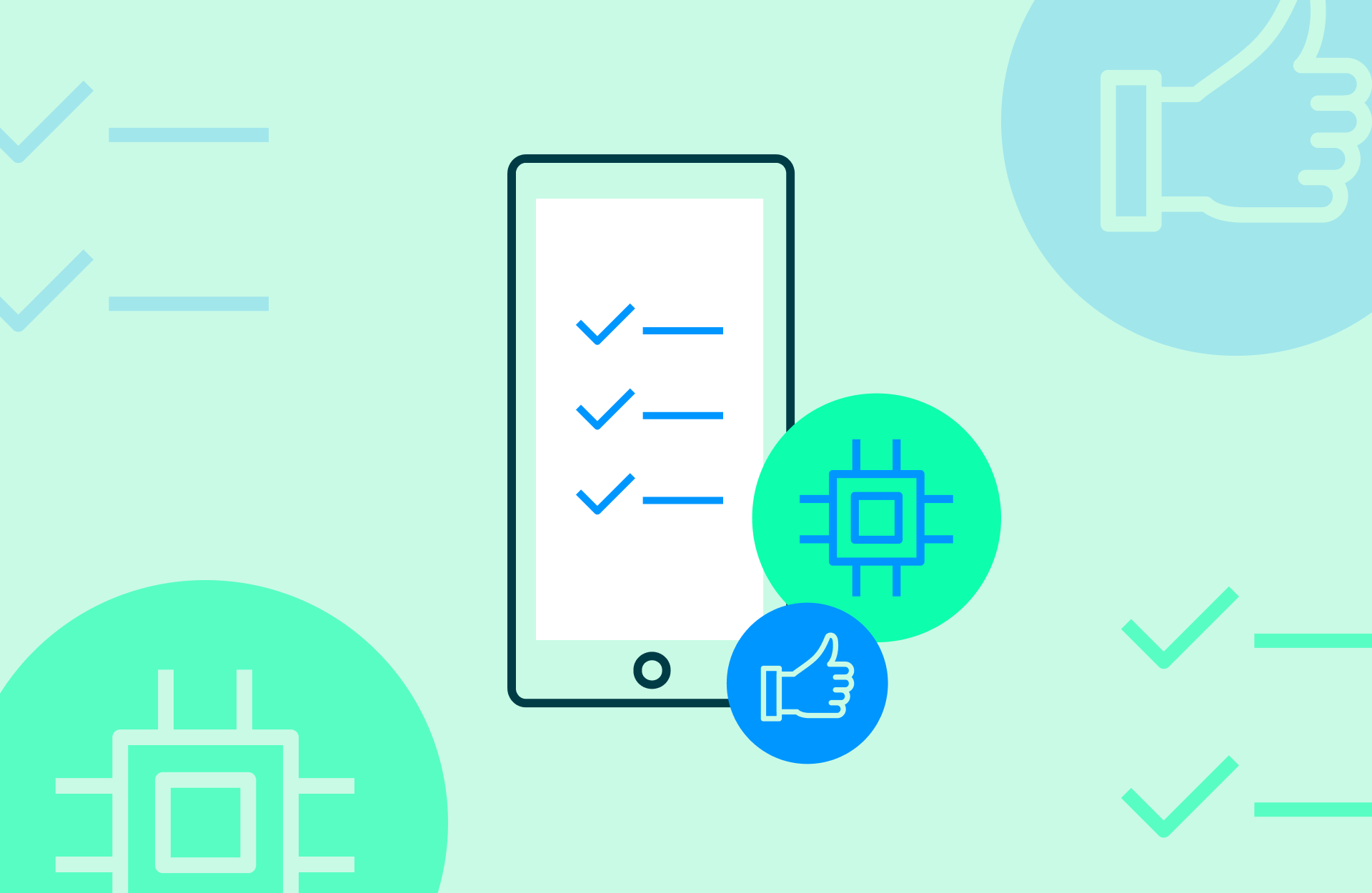The best writing AI practices for the modern classroom continue to evolve. Mastering AI for simple tasks, as well as using these tools to streamline workflows and support student learning, is all possible when equipped with an open mind and a readiness to adapt.
In today's world, AI writing tools have emerged as both polarizing and valuable resources for students and teachers. There are some that see any writing AI as a threat to the integrity of learning; even at the annual conference for the International Center for Academic Integrity (ICAI) in March 2023, educational professionals from around the world engaged in the debate: “To ban or not to ban AI writing in schools?”
Conversely, many are seeing the value of writing AI in the classroom. By leveraging AI, teachers are finding that they can enhance their students' writing skills and streamline their own day-to-day tasks. In this fast-paced digital age, where communication and information sharing have become integral parts of our lives, leveraging AI in the classroom is not only a practical choice but also an opportunity to equip students with the necessary skills to thrive in the 21st century.
This blog post will delve into practical tips for teachers who aspire to incorporate writing AI tools effectively in the classroom. Additionally, we asked ChatGPT how AI can assist teachers in simplifying tasks, freeing up valuable time for more meaningful interactions with their students. Read on: you may be surprised by how thoughtful ChatGPT was in offering advice on its own usage.
Getting started with writing AI in the classroomFirst and foremost, it’s crucial to begin by explaining what using writing AI might entail and outlining its strengths and limitations. Turnitin’s team of veteran educators has developed a robust AI writing toolkit, including both student- and teacher-facing resources. These tools showcase how to get started with AI in the classroom, from preparing writing assignments for possible AI misuse to providing information on original thinking throughout the writing process.
Additionally, it’s important to update academic integrity policies to incorporate AI because as we look ahead, it’s clear that whether or not educators choose to formally include AI writing tools in their curriculum, there is a strong chance students will be using them on their assignments.
Once the groundwork is set and everyone (including the families of students) understands the academic policies and expectations around AI usage in the classroom, the real work can begin.
How to empower students with tools for writing AIWhen integrated meaningfully, writing AI can encompass a range of applications, from providing instant feedback and suggesting improvements, to enhancing overall writing proficiency. Teachers can introduce students to these tools, highlighting their benefits and creating awareness of how—when used appropriately—they can support a thoughtful writing process.
To maximize the impact of AI writing tools, teachers can integrate them strategically into writing instruction by:
- Establishing guidelines for writing AI tools in the classroom
- Balancing technology and human feedback
- Teaching digital literacy on writing AI
Let’s look at each of these approaches closely:
Establishing guidelines for writing AI tools in the classroomEducators should establish clear guidelines on when and how to use the AI writing tools, ensuring students understand their purpose as aids rather than replacements for critical thinking and creativity. Instructors need to encourage students to take ownership of their writing process while utilizing AI suggestions as a guide. Turnitin’s “Ethical AI use checklist for students” can be a helpful resource when diving into the writing process, as it maps out guidelines during all phases of work to help students to self-monitor their AI usage.
AI writing tools offer features such as grammar and spelling correction, vocabulary enhancement, sentence structure suggestions, and style analysis. Even Turnitin’s Draft Coach utilizes AI technology to provide students in Google Docs and Microsoft Word real-time feedback on their citations, grammar, and similarity. Teachers can demonstrate these features by providing examples and engaging students in practical exercises.
Many educators who choose to include AI in their activities opt to explore alongside their students, asking ChatGPT a variety of queries to see how the generated text may change depending on the details provided in the request. By actively engaging with the tools, students may better understand the rationale behind AI recommendations and make more informed decisions about their writing choices.
Balancing technology and human feedbackWhile AI writing tools offer valuable suggestions, it is crucial to maintain a balance between AI-generated feedback and human input. By going beyond “Good job” and supplementing the AI feedback on assignments, teachers can provide personalized guidance and constructive criticism, ensuring students understand the reasoning behind both the human and AI recommendations, fostering a deeper understanding of writing principles.
Feedback that occurs in formative assessments means students can incorporate what they’ve learned into subsequent assignments. This feedback loop gives students the chance to reflect on and during the writing process, pushing them to critique their own and others’ writing, and helping them to better understand how they write. AI-generated feedback can provide some handholds for students on their writing journey, but there is little that compares to the personalized feedback a knowledgeable instructor can give. Dr. John Hattie’s research, for example, highlights the value of “Where to next?” feedback by offering students clear next steps on how to address an issue that’s relevant to the stated requirements of the assignment.
The American Library Association defines digital literacy as “the ability to use information and communication technologies to find, evaluate, create, and communicate information, requiring both cognitive and technical skills.” Replace the term communication technologies with AI tools and educators can understand why digital and AI literacy go hand-in-hand.
According to Cynthia Breazeal, a professor of media arts and sciences at the Massachusetts Institute of Technology (USA), there is deep value to AI literacy because “We need to demystify how these systems work, how you build these things, at a grade-appropriate kind of level, because there’s so much hype and confusion,” she says. “People talk about these things like a conscious ether that surrounds us. [Students] need to understand that we’re really talking about [something] people actually make and control and engineer.”
As AI writing tools become more prevalent, teaching digital and AI literacy is crucial. Educators need to teach, not only how to properly cite AI tools when incorporated into an assignment, but also the limitations and appropriate use of AI tools, empowering students to engage with AI-generated suggestions thoughtfully. Students’ critical thinking skills become all the more important, enabling them to evaluate and understand AI-generated recommendations within a broader context. Digital literacy and AI literacy go hand-in-hand because they both require a nuanced approach and a thoughtful discretion from students and instructors as they research, write, and utilize online information and technology.
How to streamline teachers’ day-to-day tasks with AIEvery teacher needs more time in their day to accomplish all of the tasks on their to do list. And while AI tools are not the answer for everyone and every task, ChatGPT offered a few ideas on how instructors may consider incorporating AI to simplify their day-to-day and streamline some of their workflows. With some thoughtful revisions and subtle editing by a human (me!), the tips below include:
- Automated grading and feedback
- Plagiarism and writing AI detection
- Lesson planning and content creation
- Personalized learning
AI can streamline the grading process by automatically evaluating assignments, offering instant feedback, and generating performance reports. Teachers can save time and ensure consistency in grading, allowing them to focus on providing targeted and in-depth feedback that addresses individual student needs effectively.
Gradescope, for example, employs AI technology to save teachers’ time by grouping similar answers, allowing instructors to grade one answer and apply it across all assessments. AI-automated grading can also help to eliminate bias and even the playing field; imagine a grading session where only the answers to questions shape the grade and not, say, the type of student that turned in the assignment or whether it’s the first or twenty-first hour an educator is grading. All of these aspects of AI-automation can lessen the amount of time instructors spend on grading and increase the time they spend on other valuable endeavors.
Using AI for plagiarism and AI-writing detectionYes, it’s true: instructors can use AI to identify AI. By leveraging AI, teachers can promptly address academic integrity issues, helping to maintain a fair and ethical learning environment. These tools enable educators to devote their energy to teaching rather than spending excessive time on manual AI-misuse or plagiarism checks. Turnitin’s plagiarism and AI writing detection tools offer immediate insights and valuable submission data for instructors who can then synthesize the information to inform next steps.
Deliberate and thoughtful lesson planning can take even a veteran educator hours, as they seek to incorporate learning outcomes and programmatic goals alongside their students’ interests and newest technologies. AI can assist teachers in creating engaging lesson plans and instructional content by generating topic ideas, suggesting relevant resources, and providing examples and templates for lesson plans.
Jorge Valenzuela has found that “ChatGPT can quickly assist in providing critical steps, needed resources, budget recommendations, and timelines” when lesson planning. In his Edutopia blog, he details his interaction with the AI model to showcase how he revised his queries to tailor his activity to specific needs. Todd Finley offers ways he has used ChatGPT to streamline planning when developing a variety of learning assets, including lesson plans, slide shows, discussion questions, and unit outlines. Both of these educators approached AI tools with curiosity and an open mind, adjusting as they went to ensure that they could still provide their students with worthwhile, relevant learning activities.
AI supports personalized learning experiences by analyzing student performance data and recommending customized learning paths. In 2016, Bill Gates imagined a world where AI-powered tutors could offer a personalized approach for each student, allowing individuals to learn at their own pace. Fast forward to now and adaptive learning platforms leverage AI algorithms to tailor instruction to meet individual student needs, ensuring each student receives targeted support based on their strengths and areas for improvement. Students with learning differences or those learning a new language, for instance, may benefit from AI-usage, which can help them to brainstorm ideas and get started on a writing project quickly with structured help.
Ethical considerations and limitations of writing AIIt is essential for both teachers and students to consider potential biases within AI writing tools. Everyone who uses AI should remain vigilant and use their judgment to ensure that AI-generated suggestions align with ethical and cultural norms. By fostering awareness and sensitivity—not just within themselves, but also within their students—teachers can navigate potential biases and promote inclusive writing practices.
In sum: The best writing AI practices and how to leverage AI in the classroomThe integration of AI writing tools in the classroom brings forth a wealth of opportunities to enhance students' writing skills and streamline teachers' workflows. By leveraging these powerful tools, students can receive personalized feedback, improve their grammar and vocabulary, and gain confidence in their writing abilities. AI can act as a supportive writing partner, offering real-time suggestions and corrections, and enabling students to refine their work with ease. Moreover, teachers can benefit from AI-powered grading and assessment systems, which save time and provide objective evaluations, allowing for more targeted instruction and individualized feedback.
The best practices for incorporating AI in the writing process involve striking a balance between the benefits of automation and the importance of human feedback, creativity, and critical thinking. Students should be encouraged to actively engage with AI tools, using them as aids rather than replacements for their own ideas and expressions. It is essential that educators emphasize that AI should serve as a tool that complements and augments the writing process, not as a substitute for human judgment and expertise.
By embracing AI writing practices in the classroom, educators can create an environment that nurtures both the technical and creative aspects of writing. Students can develop essential skills while also adapting to the digital tools that are becoming increasingly prevalent in the modern world. So let us embrace the potential of AI, with thoughtful implementation and guidance, as we embark on a new era of writing education.






